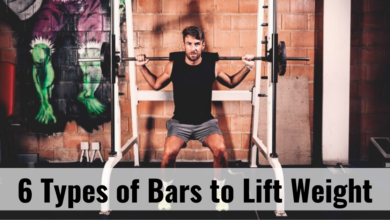How To Relieve Sore Muscles After Workout?

After an intense workout, sore muscles can be a common and unwelcome aftermath, making it challenging to perform daily activities and hinder future workout sessions. Fortunately, there are effective strategies to relieve sore muscles after a workout and promote faster recovery.
This guide will provide you with practical tips and techniques to alleviate muscle soreness and get you back on track. From gentle stretching exercises and hot/cold therapy to proper nutrition and rest, incorporating these practices into your post-workout routine can significantly reduce muscle soreness, enhance flexibility, and improve overall recovery. Say goodbye to post-workout discomfort and embrace a more comfortable and fulfilling fitness journey.

Understanding Muscle Soreness
Muscle soreness, also known as delayed onset muscle soreness (DOMS), is a common physiological response to exercise or physical activity. It typically occurs 24 to 48 hours after intense or unfamiliar exercise and can last up to several days. Understanding the mechanism behind muscle soreness can help individuals manage their discomfort and adjust their training routines accordingly.
During exercise, especially when it involves eccentric contractions (lengthening of the muscle), microdamage occurs within the muscle fibers. This damage triggers an inflammatory response as the body initiates the repair process. Inflammation, along with the accumulation of metabolic waste products like lactic acid, contributes to the sensation of soreness. To relieve sore muscles after a workout, certain strategies can be employed.
While muscle soreness can be uncomfortable, it is generally not a cause for concern and is considered a normal part of the muscle adaptation process. Adequate rest, proper nutrition, and gradual progression in exercise intensity can help alleviate and prevent muscle soreness. Engaging in light activity, such as stretching or low-impact exercise, can also promote blood flow and aid in recovery.
Importance of Proper Warm-Up and Cool-Down
Proper warm-up and cool-down are essential components of any exercise or physical activity routine. They play a crucial role in preparing the body for activity and aiding in its recovery afterward.
A proper warm-up gradually increases heart rate, blood flow, and body temperature. This helps to loosen up the muscles and joints, improving flexibility and range of motion. It also prepares the cardiovascular system for the increased demands of exercise, reducing the risk of injury. Additionally, a warm-up mentally prepares individuals for the upcoming activity, enhancing focus and concentration.
On the other hand, a cool-down after a workout allows the body to gradually return to its pre-exercise state, relieve sore muscles after the workout. It helps to lower heart rate and body temperature, preventing dizziness and fainting. Cool-down exercises, such as stretching, promote muscle recovery, reducing the likelihood of muscle soreness and stiffness. They also assist in removing waste products, such as lactic acid, from the muscles, which can expedite the recovery process.
Importance of Post-Workout Recovery
Post-workout recovery is crucial for optimizing athletic performance, preventing injuries, achieving long-term fitness goals, and relieving sore muscles after a workout. When we engage in physical exercise, our muscles undergo stress and micro-tears, and our energy stores are depleted. The recovery period allows our body to repair and rebuild these tissues, replenish glycogen stores, and restore energy levels, ultimately helping to relieve sore muscles after a workout.
One key benefit of post-workout recovery is muscle repair and growth. During recovery, the body repairs the damaged muscle fibers, leading to increased strength and hypertrophy. Adequate recovery also helps to reduce muscle soreness, allowing individuals to maintain a consistent exercise routine.
Furthermore, post-workout recovery plays a vital role in preventing injuries. When we exercise, our muscles and joints are subjected to repetitive stress and strain. Recovery allows for the restoration of muscle balance and joint mobility, reducing the risk of overuse injuries and musculoskeletal imbalances.
Lastly, post-workout recovery promotes overall well-being. It helps regulate hormone levels, including cortisol and testosterone, which affect muscle growth and fat metabolism. Additionally, adequate recovery enhances sleep quality, reduces stress, and improves mental focus, leading to improved mood and cognitive function.
Tips for Relieving Sore Muscles
If you’re experiencing sore muscles, here are some tips to help relieve the discomfort:
- Rest: Give your muscles time to recover by taking a break from intense physical activity. Adequate rest is crucial for muscle repair.
- Apply heat or cold: Applying heat, such as a warm compress or a hot bath, can help relax sore muscles and improve blood circulation. Alternatively, using an ice pack or cold compress can numb the area and reduce inflammation.
- Gentle stretching: Engage in light stretching exercises to alleviate muscle stiffness and improve flexibility. However, avoid overstretching, as it may exacerbate the soreness.
- Massage therapy: Consider getting a massage to promote blood flow and relieve muscle tension. You can also use a foam roller or a tennis ball to massage the affected area at home.
- Stay hydrated: Drinking plenty of water is important for muscle recovery and overall health. It helps flush out toxins and prevents dehydration, which can worsen muscle soreness.
- Take over-the-counter pain relievers: Nonsteroidal anti-inflammatory drugs (NSAIDs) like ibuprofen can help alleviate pain and reduce inflammation. However, consult your doctor or pharmacist before taking any medication.
Remember, if the soreness persists or is accompanied by severe pain or other concerning symptoms, it’s advisable to consult a healthcare professional for further evaluation.

Massage Therapy for Muscle Relief
Massage therapy is an effective approach to achieving muscle relief and relaxation. Through the skilled manipulation of soft tissues, massage therapists can alleviate muscle tension, reduce pain, and promote overall well-being. The application of various massage techniques, such as effleurage, kneading, and deep tissue work, targets specific muscle groups to release tightness and increase blood flow.
By stimulating circulation, massage therapy helps to deliver oxygen and nutrients to the muscles while removing metabolic waste products. This process aids in the recovery of overworked or injured muscles, reducing inflammation and promoting faster healing. Additionally, massage therapy can improve flexibility and range of motion by stretching and lengthening muscles and connective tissues.
The therapeutic benefits of massage extend beyond physical relief. In addition to relieve sore muscles after a workout, the calming nature of the massage experience can also reduce stress and anxiety, leading to a sense of relaxation and well-being. Overall, massage therapy serves as a holistic approach to muscle relief, combining physical and mental relaxation techniques to promote overall health and wellness.
Incorporating Active Recovery Days
Incorporating active recovery days into your exercise routine is a valuable strategy to enhance your overall fitness and promote optimal recovery. Active recovery days involve engaging in low-intensity physical activities that help to stimulate blood flow, reduce muscle soreness, and prevent overuse injuries.
By incorporating active recovery days, you give your body the opportunity to repair and rebuild itself after intense workouts. Activities such as gentle stretching, yoga, walking, swimming, or cycling at a relaxed pace can be excellent options for active recovery days. These activities increase circulation, loosen tight muscles, and promote flexibility without placing excessive stress on your body.
Active recovery days also provide mental and emotional benefits by giving you a break from intense workouts and reducing exercise-related stress. They can help prevent burnout and keep you motivated to continue your fitness journey.
Prevention of Muscle Soreness
Preventing muscle soreness is a crucial aspect of maintaining an active and healthy lifestyle. Here are some strategies that can help alleviate or minimize muscle soreness:
- Warm up and cool down: Prior to any physical activity, it’s essential to warm up the muscles with dynamic stretches and light exercises. Cooling down afterward allows the muscles to gradually return to their resting state.
- Gradual progression: Avoid sudden increases in intensity or duration of workouts. Gradually increase the intensity or duration of exercise to give your muscles time to adapt.
- Proper nutrition: Consume a balanced diet rich in protein, carbohydrates, and healthy fats. These nutrients support muscle recovery and repair.
- Hydration: Drink plenty of water before, during, and after exercise to keep your muscles hydrated and prevent cramping.
- Stretching and foam rolling: Incorporate static stretches and foam rolling exercises into your routine to improve flexibility and relieve muscle tension.
- Rest and recovery: Allow sufficient time for rest and recovery between workouts. Adequate sleep and rest days are essential for muscle repair and growth.
By implementing these preventive measures, you can reduce the likelihood and severity of muscle soreness, enabling you to stay active and achieve your fitness goals.
More Article You May Read For Workout : How long does pre workout last?
Conclusion
In conclusion, relieving sore muscles after a workout can be achieved through a combination of effective strategies. Firstly, incorporating a proper cool-down routine, including gentle stretches, can help reduce muscle tension and promote recovery. Additionally, applying ice or heat therapy to the affected areas can provide relief and reduce inflammation.
Engaging in low-impact activities, such as swimming or yoga, can also promote blood flow and aid in muscle recovery. Adequate rest and sleep are crucial, allowing the body to repair and rejuvenate. Finally, maintaining a balanced diet and staying hydrated support overall muscle health and recovery. By implementing these practices, one can effectively alleviate sore muscles and optimize post-workout recovery.

FAQs
What helps sore muscles recover faster after workout?
Proper rest, hydration, gentle stretching, light exercise, foam rolling, massage, applying heat or cold, and consuming protein-rich foods aid muscle recovery.
Should I still workout if my muscles are sore?
Yes, you can still workout if your muscles are sore, but listen to your body and avoid overexertion.
How long do sore muscles last?
The duration of sore muscles varies, but typically they last for a few days up to a week.
How can I heal my muscles faster?
To promote faster muscle healing: rest, ice the affected area, compress it with a bandage, elevate the limb, and avoid strenuous activity.




daxktilogibigibi.9YhEbr78x0Rp
wainscot xyandanxvurulmus.Dr8JNk0isYKl
Thank you for the auspicious writeup It in fact was a amusement account it Look advanced to far added agreeable from you However how can we communicate
Email: fatyfit2@gmail.com